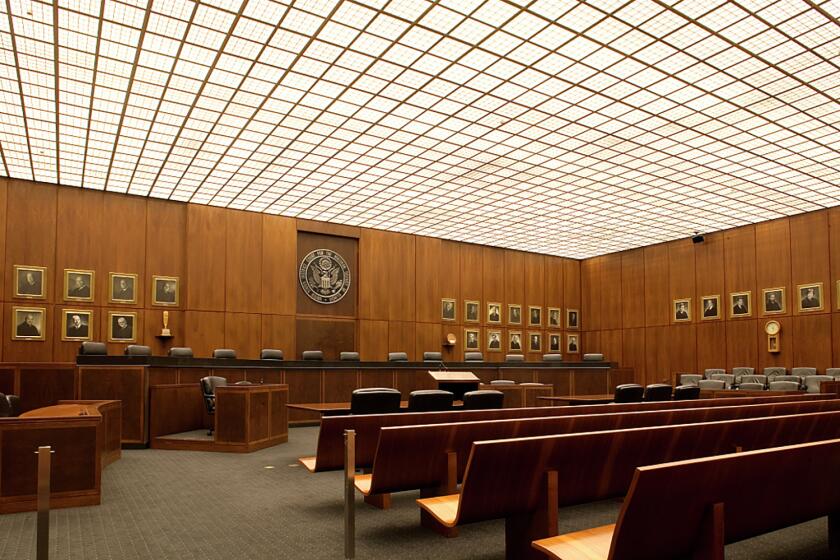Editorial: L.A. County should invest $20 million to keep mentally ill out of jail
After years of doing far too little to divert mentally ill people from jail, Los Angeles County leaders now seem to realize that they must step up the pace. The Board of Supervisors can demonstrate that it is serious about better mental health treatment and more responsible jail management by adopting Supervisor Mark Ridley-Thomas’ motion to invest $20 million in diversion programs. It’s not enough, but it’s a start, and would bring the county much closer to a real commitment than the $3 million currently spent annually on various pilot programs.
It is hard to overstate the role that mental illness plays in filling the county’s overcrowded and troubled jails. Appearing before the supervisors this month, Dist. Atty. Jackie Lacey noted that 17% of male inmates and 24% of female inmates were in need of at least some sort of mental health treatment. A majority of them aren’t even serving sentences but are merely being held while they await bail hearings or trial.
Certainly there are accused and convicted offenders who are sufficiently dangerous or have committed sufficiently egregious crimes to belong in jail even if they are sick. Mental illness by itself cannot be a get-out-of-jail free card, and the county must ensure that it has the facilities, staff and training to provide proper treatment in its jails.
But hundreds and perhaps thousands of mentally ill inmates need not be in jail at all because their alleged offenses — from indecent exposure to petty theft and even some more serious but nonviolent crimes — are symptoms of their illness. Treating the illness produces better results for the patient, the taxpayer and the community than punishing the sick for being sick. In other jurisdictions, investments in community treatment programs have removed repeat offenders from the cycle of jail to street and back to jail.
In June, the U.S. Department of Justice warned that it would seek court supervision of the county’s treatment of mentally ill inmates. Its oversight won’t extend to outpatients, but in its letter, the Justice Department noted that the remedies it was seeking to keep both prisoners and staff safe “can be implemented more effectively if the number of prisoners needing mental health services is reduced.”
It makes sense, then, to allocate funding for programs to identify arrestees who shouldn’t go to jail in the first place but should instead be referred to effective and safe community treatment. Acting now would ensure that funding is in place in September, when the county finalizes its supplemental budget and when Lacey and her task force studying the challenge return to the Board of Supervisors with final recommendations for diversion programs — and, perhaps, when the county is hammering out details of court oversight of in-jail mental health treatment.
Follow the Opinion section on Twitter @latimesopinion
More to Read
A cure for the common opinion
Get thought-provoking perspectives with our weekly newsletter.
You may occasionally receive promotional content from the Los Angeles Times.






